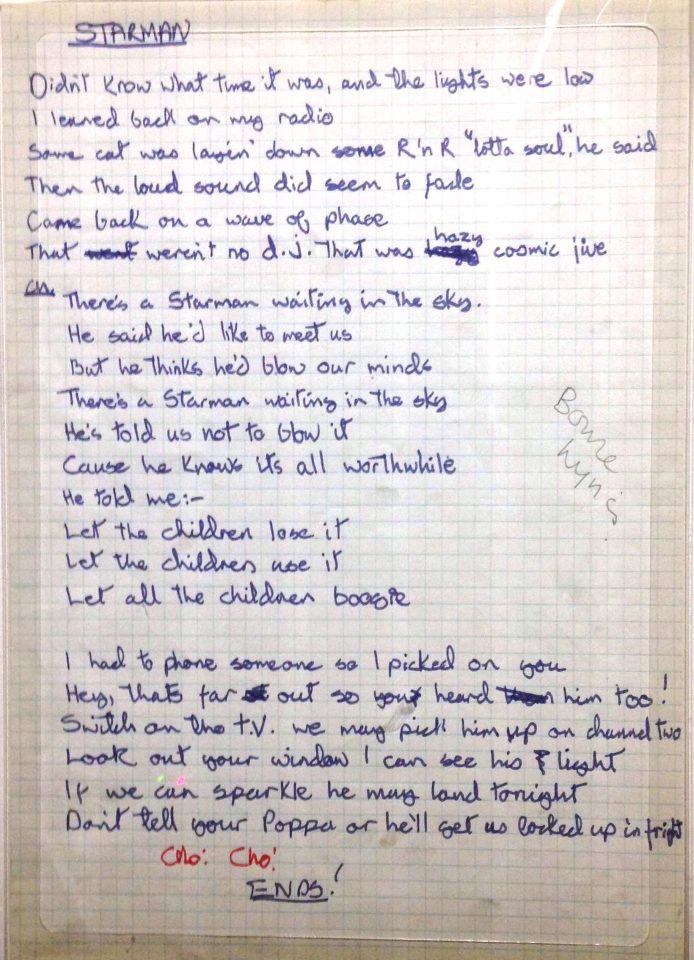The concept
‘Starman’ may have been partly inspired by Robert A Heinlein’s Starman Jones. The novel was published in 1953, when when the young David Jones was six years old. Bowie was a science fiction fan at a young age, and would have doubtless enjoyed the fantasy of a space explorer who shared his surname.There may have been another antecedent in ‘There’s A Starman In Ward 7’, a 1965 short story by David Rome. In the piece, an asylum inmate awakens to see the Starman, a new patient in the titular ward who claims to be from Alpha Centauri.
The Starman encourages an uprising within the asylum before vanishing, leaving the narrator alone, watching the skies and hoping to see him return.
Although Bowie’s hit single was lighter in tone, by 1972 he was no stranger to writing about mental illness, and ‘Starman’ touches upon the subject: “Don’t tell your poppa or he’ll get us locked up in fright”; “He’d like to come and meet us/But he thinks he’d blow our minds…”
Although The Rise And Fall Of Ziggy Stardust And The Spiders From Mars is often described as Bowie’s first concept album, several of the songs appear to have little or no link to the supposed story – a belief shared by its producer, Ken Scott.
Yes, they fit together very well and one can weave a story from some of them, but when you consider that ‘Round And Round’ was originally there in place of ‘Starman’, it doesn’t make much sense as a concept. How does ‘Round And Round’ ever fit into the Ziggy story? It’s a classic Chuck Berry song. How does ‘It Ain’t Easy’ fit in with the Ziggy concept? That was taken from the Hunky Dory sessions. All this about Ziggy being Starman is bullshit. It was a song that was just put in as a single at the last minute at the record label’s insistence. So while it’s true that there were a few songs that fitted the ‘concept’, the rest were just good songs that all worked well together as they would in any good album.
Abbey Road To Ziggy Stardust
In 1974, Bowie was working on a dramatisation of the Ziggy Stardust story, variously described as a stage show and a television special. In a joint interview with author William Burroughs for Rolling Stone, he explained how ‘Starman’ fitted into the concept.
Ziggy is advised in a dream by the infinites to write the coming of a starman, so he writes ‘Starman’, which is the first news of hope that the people have heard. So they latch onto it immediately. The starmen that he is talking about are called the infinites, and they are black-hole jumpers. Ziggy has been talking about this amazing spaceman who will be coming down to save the earth. They arrive somewhere in Greenwich Village. They don’t have a care in the world and are of no possible use to us. They just happened to stumble into our universe by black-hole jumping. Their whole life is traveling from universe to universe. In the stage show, one of them resembles Brando, another one is a black New Yorker. I even have one called Queenie the Infinite Fox.Now Ziggy starts to believe in all this himself and thinks himself a prophet of the future starman. He takes himself up to incredible spiritual heights and is kept alive by his disciples. When the infinites arrive, they take bits of Ziggy to make themselves real because in their original state they are anti-matter and cannot exist on our world. And they tear him to pieces onstage during the song ‘Rock ‘N’ Roll Suicide’. As soon as Ziggy dies onstage the infinites take his elements and make themselves visible. It is a science-fiction fantasy of today…
Rolling Stone, 28 February 1974



Incredible song. The rhythm and meter of the lyrics sung in each verse are so unusual and yet feels perfectly right. I never fully read them until today and was quite moved by them. It’s a very melancholy song. This may sound strange but there’s an odd connection to early Neil Diamond’s songwriting and early Bowie songwriting style. Don’t know if anyone else hears a connection.
I love this site. Here in New York City I often can’t sleep at night and when that happens I thoroughly enjoy reading through your beautifully written, highly informative pages. Thanks Joe for all the work you put into this. It’s a masterpiece! Cheers!